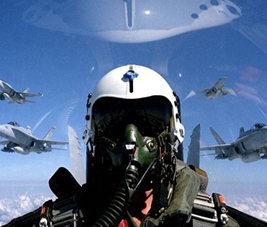There are roughly 1,000 such drone pilots, known in the trade as “18Xs,” working for the U.S. Air Force today. Another 180 pilots graduate annually from a training program that takes about a year to complete at Holloman and Randolph Air Force bases in, respectively, New Mexico and Texas. As it happens, in those same 12 months, about 240 trained pilots quit and the Air Force is at a loss to explain the phenomenon. (The better-known U.S. Central Intelligence Agency drone assassination program is also flown by Air Force pilots loaned out for the covert missions.)
On January 4, 2015, the Daily Beast revealed an undated internal memoto Air Force Chief of Staff General Mark Welsh from General Herbert “Hawk” Carlisle stating that pilot “outflow increases will damage the readiness and combat capability of the MQ-1/9 [Predator and Reaper] enterprise for years to come” and added that he was “extremely concerned.” Eleven days later, the issue got top billing at a special high-level briefing on the state of the Air Force. Secretary of the Air Force Deborah Lee James joined Welsh to address the matter. “This is a force that is under significant stress — significant stress from what is an unrelenting pace of operations,” she told the media.
In theory, drone pilots have a cushy life. Unlike soldiers on duty in “war zones,” they can continue to live with their families here in the United States. No muddy foxholes or sandstorm-swept desert barracks under threat of enemy attack for them. Instead, these new techno-warriorscommute to work like any office employees and sit in front of computer screens wielding joysticks, playing what most people would consider a glorified video game.
They typically “fly” missions over Afghanistan and Iraq where they are tasked with collecting photos and video feeds, as well as watching over U.S. soldiers on the ground. A select few are deputized to fly CIA assassination missions over Pakistan, Somalia, or Yemen where they are ordered to kill “high value targets” from the sky. In recent months, some of these pilots have also taken part in the new war in the Syrian and Iraqi borderlands, conducting deadly strikes on militants of ISIL.
Each of these combat air patrols involves three to four drones, usually Hellfire-missile-armed Predators and Reapers built by southern California’s General Atomics, and each takes as many as 180 staff members to fly them. In addition to pilots, there are camera operators, intelligence and communications experts, and maintenance workers. (The newer Global Hawk surveillance patrols need as many as 400 support staff.)

